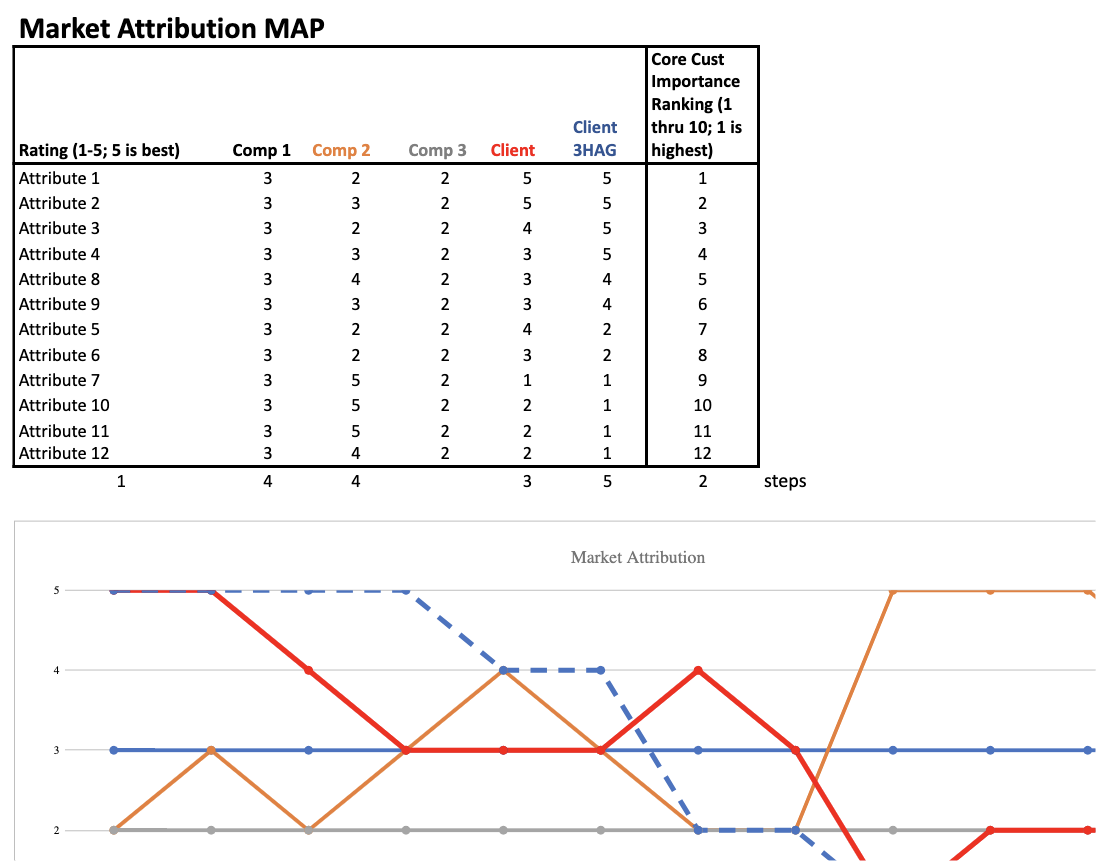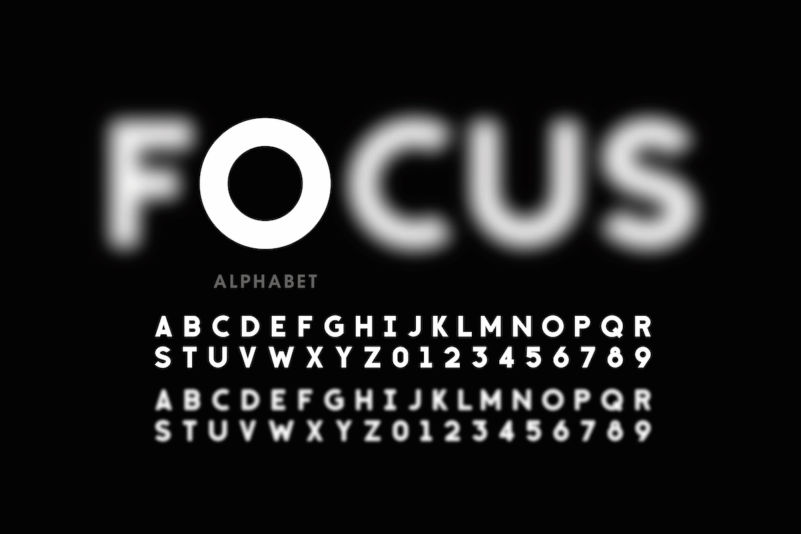Quick Summary
To scale rapidly, businesses must focus on a unique attribute they excel in, surpassing competitors. This clarity defines core customers and uncovers market gaps.
Takeaways
- Focus on a unique strength to stand out in the market.
- Depth matters more than breadth when scaling a business.
- Understanding core customers helps refine strategy and messaging.
- Market gaps are easier to exploit when you specialise.
- A clear strategic focus accelerates growth and reduces wasted effort.
Let me read your mind for a moment. I’m trying to guess why your business is different from your competitors. Possible answers are popping up. You’re structured differently. Your people are more innovative. You’ve got better offices. You’ve been around for longer. Am I close?
These may be true, but will your customers give a shit about them? All of these attributes are through your lens, not your customers’. They’re internal things. You need to look externally.
I interviewed Hermann Simon this week for an upcoming episode of our Curious Leadership podcast. A well-known author and speaker, he’s just published an updated version of his book ‘Hidden Champions’. In it, he profiles 3,000 highly successful businesses who are market leaders in what they do. And no one’s ever heard of them!
Half of these businesses are in Germany. We chat about why this country specifically? What is it that leads a German business to decide to make ceramic ball bearings for the airline industry, becoming world number 1 in the process? Hermann Simon’s firm, Hermann-Kucher Strategy & Marketing, was a $50 million turnover business in Germany. Now it’s a $500 million turnover business globally.
It all boils down to focus and depth around your attributes. To have a truly differentiated strategy, you need to zone in on the one thing you can do better than any other business. If you want your company to scale quickly, this is vital. Here’s why.
Gives a detailed picture of your core customer and market
Central to any differentiated strategy is a detailed picture of your core customer. In fifty words or less, can you describe your most profitable customer, their problem and the solution you offer to solve that problem?
You also need to understand your competition – and I mean, really understand them. How they go to market, their pricing, and the ways their products differ from yours. It amazes me how many business leaders I speak to don’t have a real handle on this. They’re all swamped, doing stuff. But it’s not strategic stuff that will take them in the right direction. It’s like they’re re-arranging deckchairs on the Titanic!
Provides clarity on your unique offering

Start by getting into the shoes of your core customer. Brainstorm all the attributes they’d look for to help them make a buying decision. Think again about their problem and what they need in a solution. There are no wrong answers here. Get them all up on the board.
The next stage is to agree on the top 10 to 15 attributes representing the core customer’s willingness to pay. Some may be technically correct but aren’t as important. To hone them down, you may need to keep returning to your core customer – some attributes may be vital to them but not to another. Remember, you’re not trying to sell everything to everyone. You’re trying to solve a problem for a small cohort of profitable customers.
Once you’ve got your list of attributes, you score your company out of five on each of them. Be honest – you can’t be brilliant at everything! Rank them in order, then go through the same exercise with your three main competitors.
Finally, load this data into an attribution map (see image above) to see where your company is relative to the competition. And you can start to work out where you want to be in three years.
Remember, you’re looking for opportunities to command a premium or drive volume. You can either drive up the willingness to pay or reduce your service cost. Unless you’re already the most significant, lowest-cost deliverer in your marketplace, you’re unlikely to beat competitors on cost. So you have to look for a niche and willingness to pay drivers that will boost your margin. After all, your margin is your long-term competitive advantage. If your margin is higher than your competitors, you win.
Identifies the opportunity gaps in your market
One of the significant light-bulb moments of attribution mapping is when, after finishing your map, areas of white space appear on the graph that neither you nor your competitors are occupying. You’ve found your potential niche!
This is where it will make sense to change your positioning. The space might be below the curve. Perhaps you decide you’re already doing ok in one area, but this doesn’t matter. So you’ll be deliberately worse at it, giving you the time and money to invest in something with more potential.
These moments are exhilarating. The niche may not be something you’ve ever considered, but you can see the potential is vast. You’ve opened up new possibilities by applying focus and depth to your attributes and those of your competitors. And now you know which attributes need concentration to push your product into this space.
Defines the one thing you can do better than anyone else
This is about finding the willingness to pay drivers that will lead to future growth. These could be around service rather than a particular product. Another conversation I had recently for my podcast was with Jeff Toister, an expert on customer experience. He told me the story of a company in Texas that managed roadhouses. In a market where you could buy petrol at any number of competitors, their differentiator was the toilets they offered motorists. They were spacious, airy and clean.
They’d put themselves in the shoes of your average trucker or motorist looking to fill up with the ultimate commodity, petrol. They knew they couldn’t differentiate hugely on price, but they could solve another need. What was that? To go to the loo. And most of their competitors’ loos were disgusting. You’d rather cross your legs and hang on until you got somewhere better. Knowing this, they put thought and care into their restroom experience. And as a direct result, they sold more petrol than their competitors. Simple, but it worked.
Informs your product marketing
So often, there’s a lack of commercial focus, particularly in tech companies with smart technical people. I discovered this when I was the new MD of Peer 1. They’d launched a hosted exchange platform priced at $16 per user. I talked to the CEO of Cobweb, Europe’s largest hosted exchange provider. He told me their revenues and adoption took off when they got their package down to $5 a user. This meant CEOs could do the maths on the back of a fag packet to determine what it cost them around software and people.
I went back to the team and said, ‘I know how to unlock the volume in this product. Sell it for $5 a user.’ ‘But’, they said, ‘It costs us $8 to make’. When they built the product, they hadn’t factored in the price they needed to sell it for. This is a common mistake. If they’d spent some time on attribution mapping, they would have realised this before it was too late.
Builds your expertise
Finding an attribute that’s unique to your business will build your expertise. Try to define your market tightly enough so that you only have around 20 competitors globally and 2000 prospects. You’re looking to do deeper things at a higher margin.
Back to the podcast conversation with Hermann Simon I mentioned earlier. He said the hidden champions in Germany typically have a 15% higher sale price which translates into three times the profitability of their unfocused competitors. That’s a big difference.
People say to me all the time, ‘But if we focus, we’re leaving money on the table.’ They’re thinking about their existing customer base and everything they do for these different people. But the moment you say this, you do nothing for nobody. You’d find the best heart surgeon available if you needed heart surgery. You wouldn’t go to your GP. People will travel halfway around the world to consult an expert.
Written by business growth coach Dominic Monkhouse. Find out more about his work here. Read his book, ‘F**k Plan B’ here.

